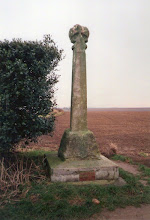- An early morning 'light' version of the battle with my 7 year old lad
- A re-enactment (of sorts) of the engagement in 1:2400 scale
- A 'what if' refight of the duel straying from the historical outcomes a little!
Emden vs. Sydney (i): a fun 'light'version
 |
| Father (Sydney - mid right hand side) and son (Emden, bottom left) face off |
 |
| We quickly came to grips and the young guy's dice rolling won the day for him! |
Emden vs Sydney (ii): historical outcome
For the actual time of the anniversary, I programmed my phone with the main stages of the duel (using Cocos Island times GMT + 6:30) and followed the action on the table.
Emden vs Sydney: The re-match!
Finally, late on the evening of 9th November I allowed myself to stray away from the historical, and conduct a re-fight between these old foes!
 |
| The opening salvo from HMAS Sydney falls short! |
 |
| The second salvo from Sydney falls short - the range finders need a strong cup of tea. |
 |
| Sydney's gunners find their target - they straddle the Emden, no hits. |
 |
| Emden seeking to close distance on Sydney to bring her guns into range. |
 |
| Emden's salvo falls short, Sydney's gunnery starts to tell on the Emden. |
 |
| SMS Emden had taken heavy damage and lost a few guns firing into her port arc. |
 |
| A momentary lapse in the accuracy of Glossop's guns allow von Muller to draw into close range. |
 |
| Nearly crippled, SMS Emden is locked into this fight. To fall away from the action would only mean the end with Sydney's guns able to pound her from beyond Emden's maximum range. |
So what does this jaw-dropping conclusion to a tense duel really mean for von Muller? His ship was critically damaged. With few (if any) safe havens in the Indian Ocean, his days of harassing trade are done. On news of the loss of the Sydney, one can only assume a second ship would have been dispatched to finish the Emden off.
Perhaps von Muller's last act would have been to return to Direction Island and finish the task of destroying this important communication hub. If that were the case, the Emden's campaign in the east could still only be seen as a major success for the Imperial German Navy.
 |
| Wrecked telegraph station, Direction Island. |
'What if's' aside, the real purpose of this game was to pause and acknowledge the terrible sacrifices on both sides that brought to an end this glorious chapter in naval history in the far east.
 |
| Crew of the HMAS Sydney after the battle with SMS Emden |
 |
| SMS Emden's wounded under cover on the deck of the Sydney |
 |
| The final fate of SMS Emden, viewed from the deck of HMAS Sydney |
 |
| A terrible end - SMS Emden beached in the surf on North Keeling Island |
 |
| With thanks to: http://sydneyemden100.com.au/gallery#M247-06_SMS_Emden |
Vale!







































